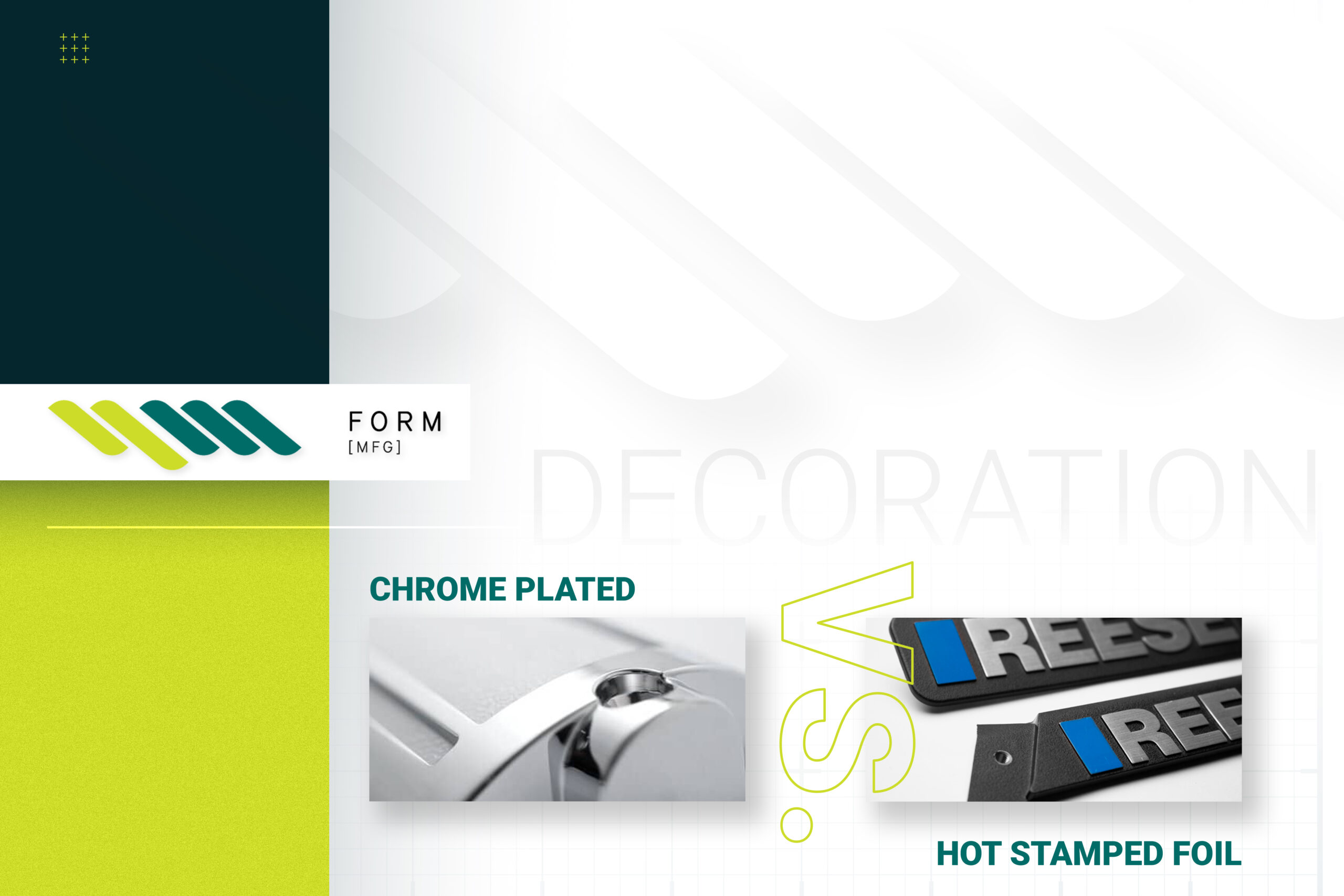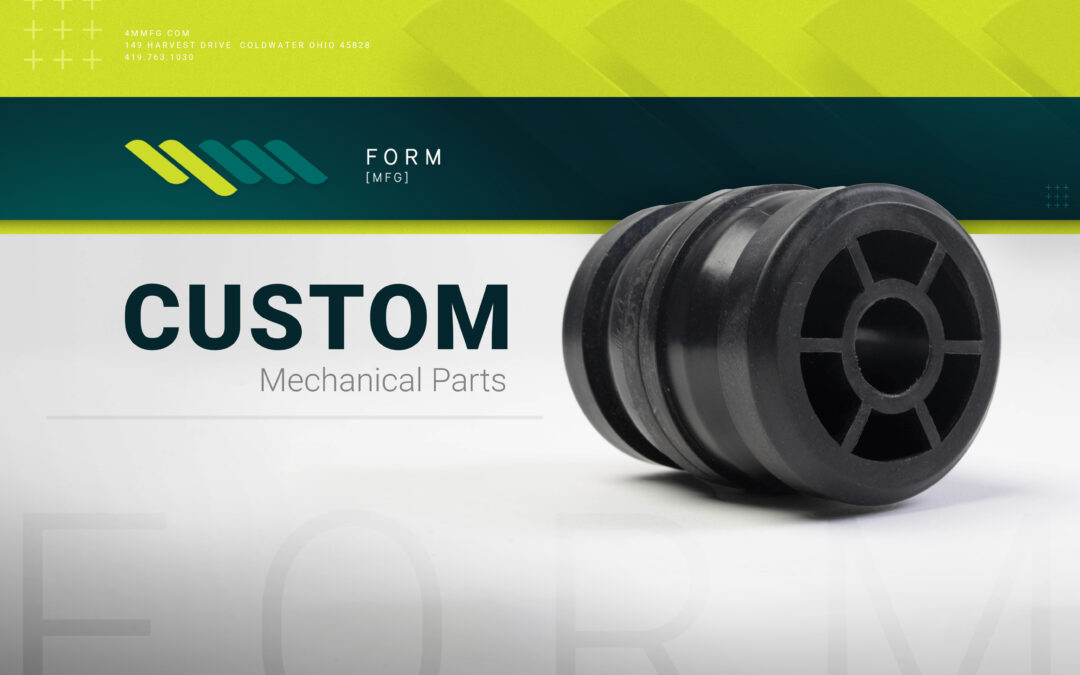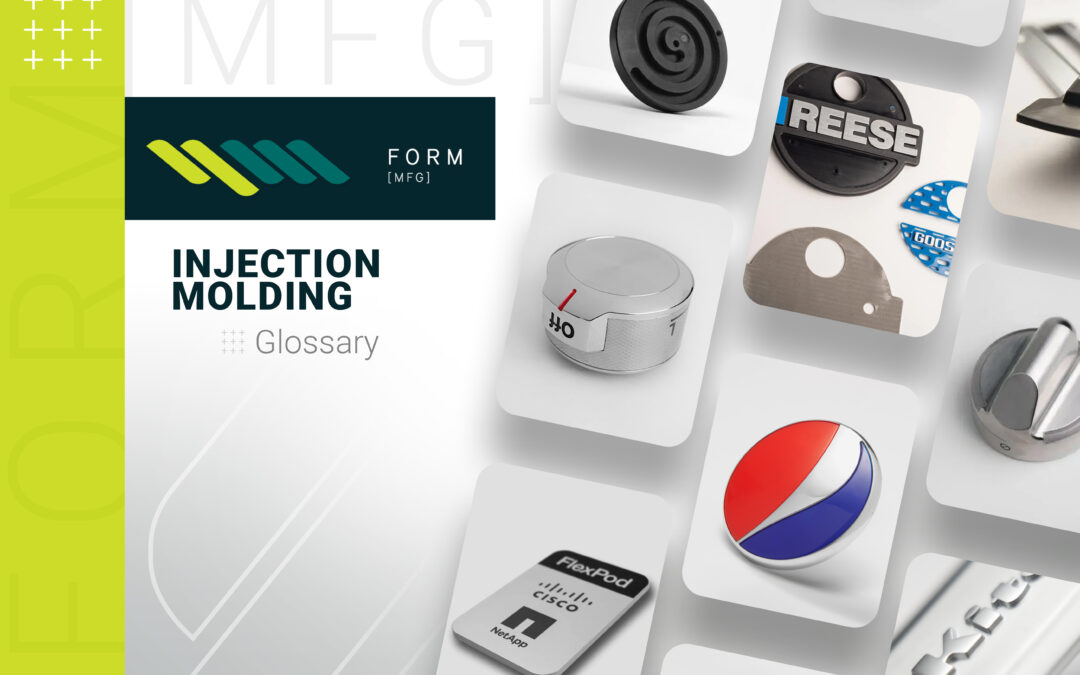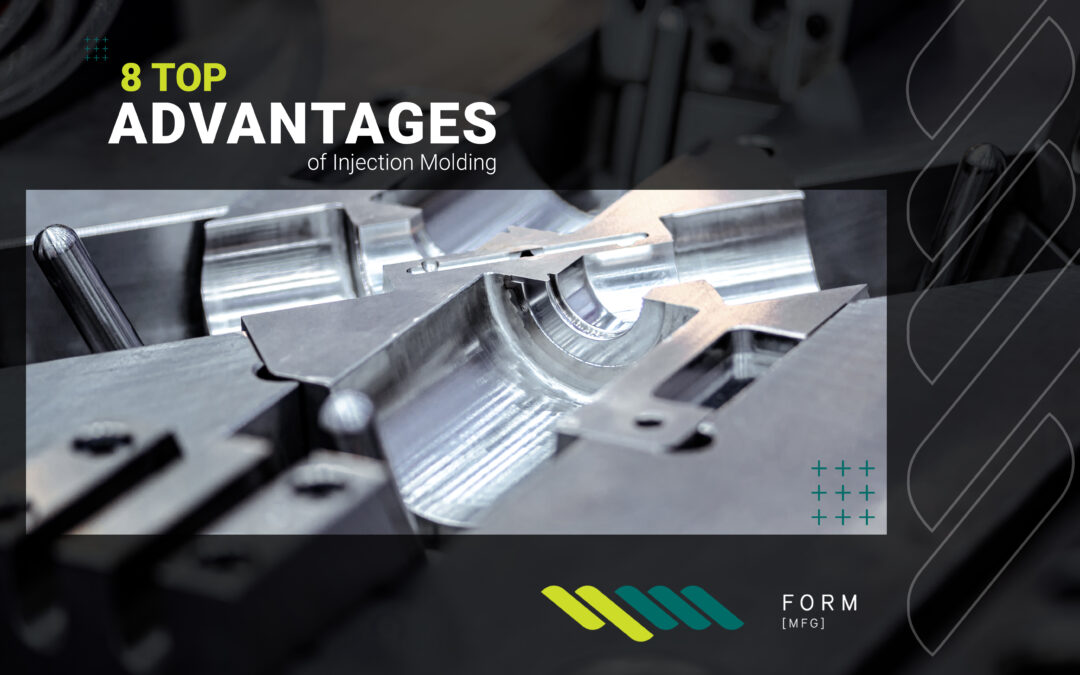Breaking Down Two Widely Used Product Finishing Options
Decorative elements are often added to enhance appearance, brand identity, and perceived value on a wide variety of products we use every day, from tools, kitchen appliances, and musical instruments to car trim, knobs, and handles. To achieve the desired finishing touches, there are a number of different techniques available, each with their own advantages and disadvantages. Two of the most popular are chrome plating and hot stamping, used in countless commercial and industrial applications to add a polished, metallic look.
Below, we’ll explore what goes into chrome plating and hot stamped foil decoration along with the pros and cons of each method so you can make an educated decision that aligns with your product vision and market goals when choosing between them.
At Form Manufacturing, we work closely with our customers in a wide variety of industries to help them elevate their products. Besides our custom injection-molding solutions, we offer top-quality chrome plating, hot stamping, and other decorative options. Connect with us today for all your badging, emblem, and component needs.
Hot Stamped Foil: A Cost-Effective, Versatile Choice
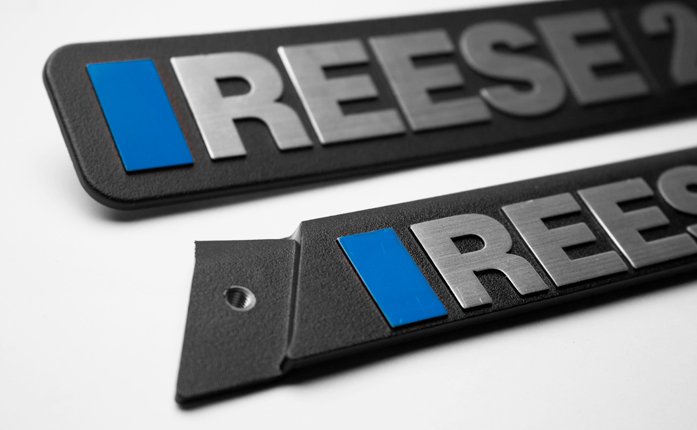
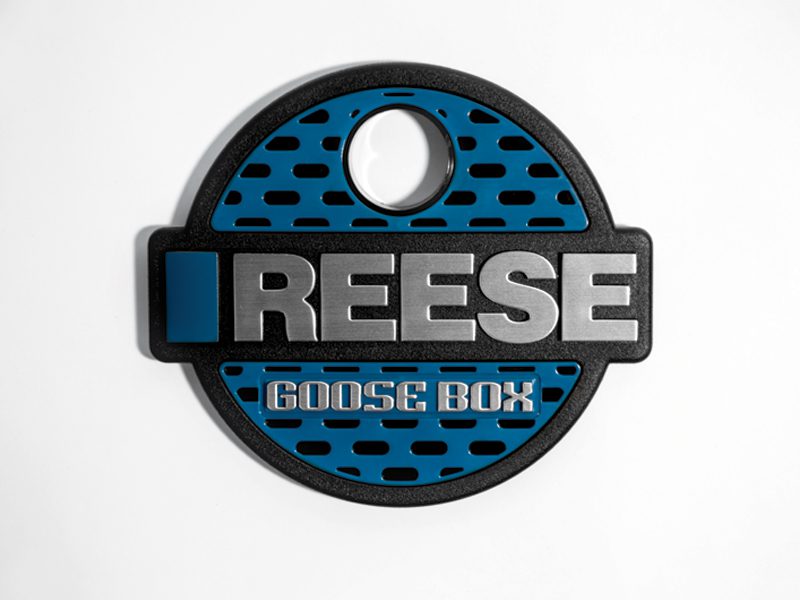

Capable of producing high-quality, intricate graphics, hot stamping (also called foil stamping or hot stamp foiling) is a permanent and durable dry decoration process in which a stamping die and mold are used to apply pressure and heat to release pigment foil from a film onto a product’s substrate, or surface. By changing the molecular structure of the material with heat and surface melting, the desired logo or other visual element is thermally fused to the substrate. The decorated part can be handled or packaged immediately from the press.
Brushed aluminum, brushed stainless-steel, and bright chrome are among the hundreds of standard hot stamping choices that mimic a real metallic appearance. Due to the many benefits it provides, especially exceptional versatility, hot stamping is one of the most widely employed decorative processes in the manufacturing industry. It can be applied to thermoplastics and thermosets, as well as fabrics, wood, metal, and other surface types. Hot stamping foils can be applied to flat or raised surfaces, multi-level configurations, cylinders, simple compound curves, and similar shapes.
✔︎ Pros of Hot Stamping
-
- Cost-Effectiveness: Due its production process and materials, hot stamping is typically less expensive than chrome plating, especially for small and medium production runs.
- Customization: Foil comes in a wide range of colors and finishes, including metallic, matte, and holographic, allowing for countless design options.
- Intricate Detailing: Hot stamping can produce intricate designs and detailed patterns, making it ideal for adding logos, embossed patterns, or decorative elements that enhance brand identity and product appeal.
- Ease of Application: Hot stamp foiling is relatively straightforward and can be applied to various materials with less specialized equipment.
- Reduced Environmental Impact: Unlike wet inks which can cause offensive odors, EPA concerns, and storage problems, the dry hot stamping process uses non-toxic materials which reduces environmental concerns.
- Minimal Setup & Cleanup: The process requires no ink mixing or messy cleanup, and the installation of a new color or design merely involves changing a roll of dry printed material which minimizes setup time.
✗ Cons of Hot Stamping
-
- Durability: Hot stamped foil decorations may be more susceptible to scratching and oxidation in high-wear applications and demanding outdoor environments.
- Limited Heat Resistance: Foils may not withstand high temperatures as well as chrome plating, limiting their use in certain applications.
- Surface Preparation: Achieving a smooth and uniform application of foil requires careful surface preparation, which can add to production time and costs.
Chrome Plating: A Premium, Durable Choice
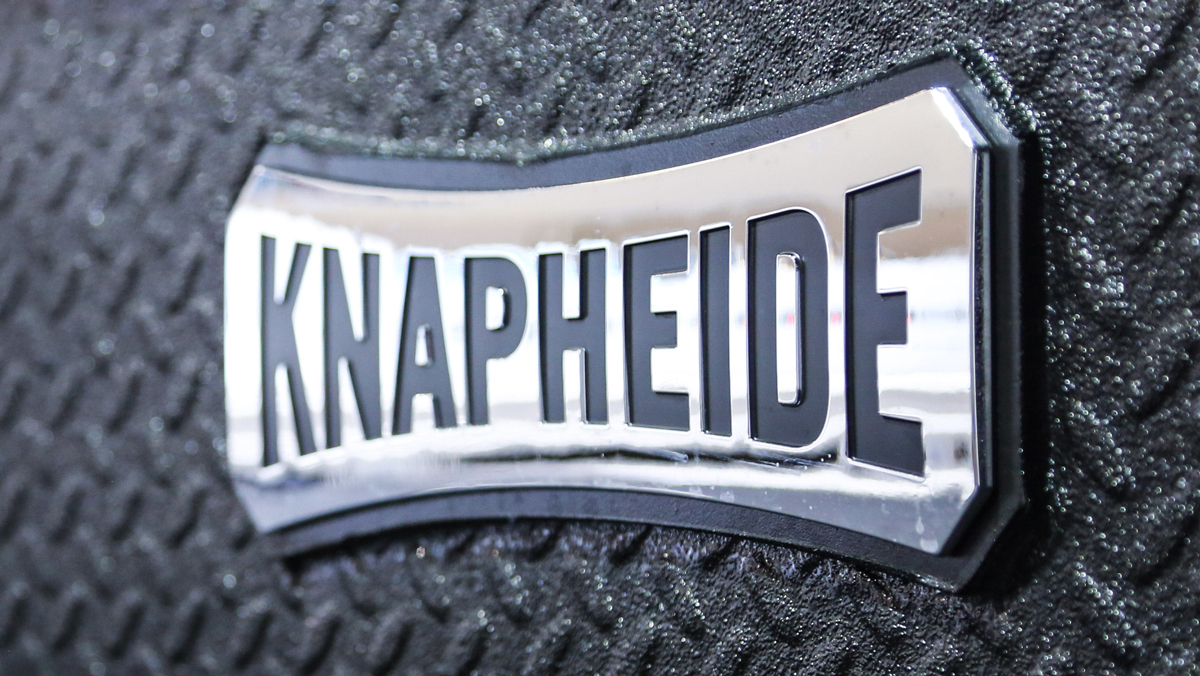
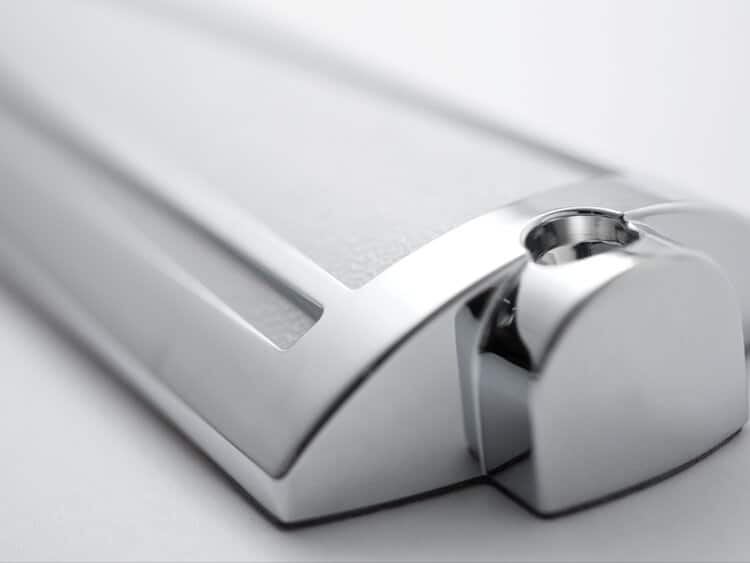

Offering greater durability and a more sophisticated look and feel, chrome plating involves placing layers of copper and nickel onto a substrate, followed by a thin layer of chromium, which protects the nickel plating from oxidation and provides a bright bluish chrome tint. While industrial hard chrome plating is used primarily to enhance wear resistance, decorative chrome plating is preferred when aesthetics and durability are desired.
Chrome plating is a multi-step electroplating process in which the part is placed into a large tank containing a mixture of acids, bases, metals, organic chemicals, and water. An electric current is sent through the solution, pulling off dissolved metal ions and depositing them onto the part. Decorative chrome plating works best on substrates of plastic, steel, aluminum, copper alloys, or zinc alloys. The luster appearance actually comes from the nickel plating beneath.
Outdoor equipment, tools, vehicles, and machines are some of the top applications for chrome plating due to its ability to help fight wear and exposure to the elements.
At Form Manufacturing, we adhere to the ASTM B 604-91 standard for decorative chrome plating and are able to achieve standards from SC1 to SC5. Our plated parts can be designed as either mirror polished or brushed.
✔︎ Pros of Chrome Plating
-
- Aesthetic Appeal: Creating a sleek, smooth, reflective surface, chrome plating enhances a part’s appearance while increasing perceived value of the overall product.
- Durability: Highly durable and resistant to corrosion, chrome plating withstands harsh environments and frequent handling.
- Moderate Versatility: While not as versatile as hot stamping, chrome plating can still be applied to a variety of materials, including plastics, metals, and ceramics, as well as many different types of component surfaces, shapes, and sizes.
- High Temperature Resistance: Its ability to withstand high temperatures makes chrome plating suitable for applications where heat resistance is required.
- Easy to Clean: The smooth surface makes it easier to clean and ensures that the material does not trap dust and dirt particles. Furthermore, its durable nature allows for the use of chemicals and household cleaners without worry.
✗ Cons of Chrome Plating
-
- Environmental Impact: Chrome plating involves toxic chemicals like chromium, requiring careful management and disposal processes to mitigate environmental impact.
- Complex Process: Featuring several stages of preparation and application, including cleaning, etching, plating, and polishing, chrome plating is a complex process that requires specialized equipment and expertise, which can lead to higher production costs.
- Thickness Limitations: Achieving uniform thickness across complex shapes can be challenging, leading to potential issues with coverage and durability.
Choosing Between Chrome Plating & Hot Stamped Foil Decoration
To decide whether chrome plating or hot stamped foil is better for your project, consider your product’s specific requirements, priorities, and budget.
-
-
- Look & Feel: While hot stamping can produce highly attractive aesthetics, chrome plating offers the more luxurious, shiny appearance.
- Versatility: Hot stamped foil is better at creating more-intricate designs and textures.
- Durability: Delivering greater heat and corrosion resistance, chrome plating is likely to last longer.
- Cost & Production: Easier to apply, hot stamped foils are more economical and offer quicker turnaround times than chrome plating.
- Environmental Concerns: Due to its dry process and non-toxic materials, hot stamping is preferred over chrome plating.
-
When you understand the differences between chrome plating and hot stamped foil decoration, you can make a better decision when choosing the best finishing options for you and your product. For optimal results, it’s always wise to rely on the skills and expertise of professionals like Form Manufacturing who have over 20 years of experience in the industry. Reach out to us with your questions, for a quote, or to discuss your unique decorative finish needs.

